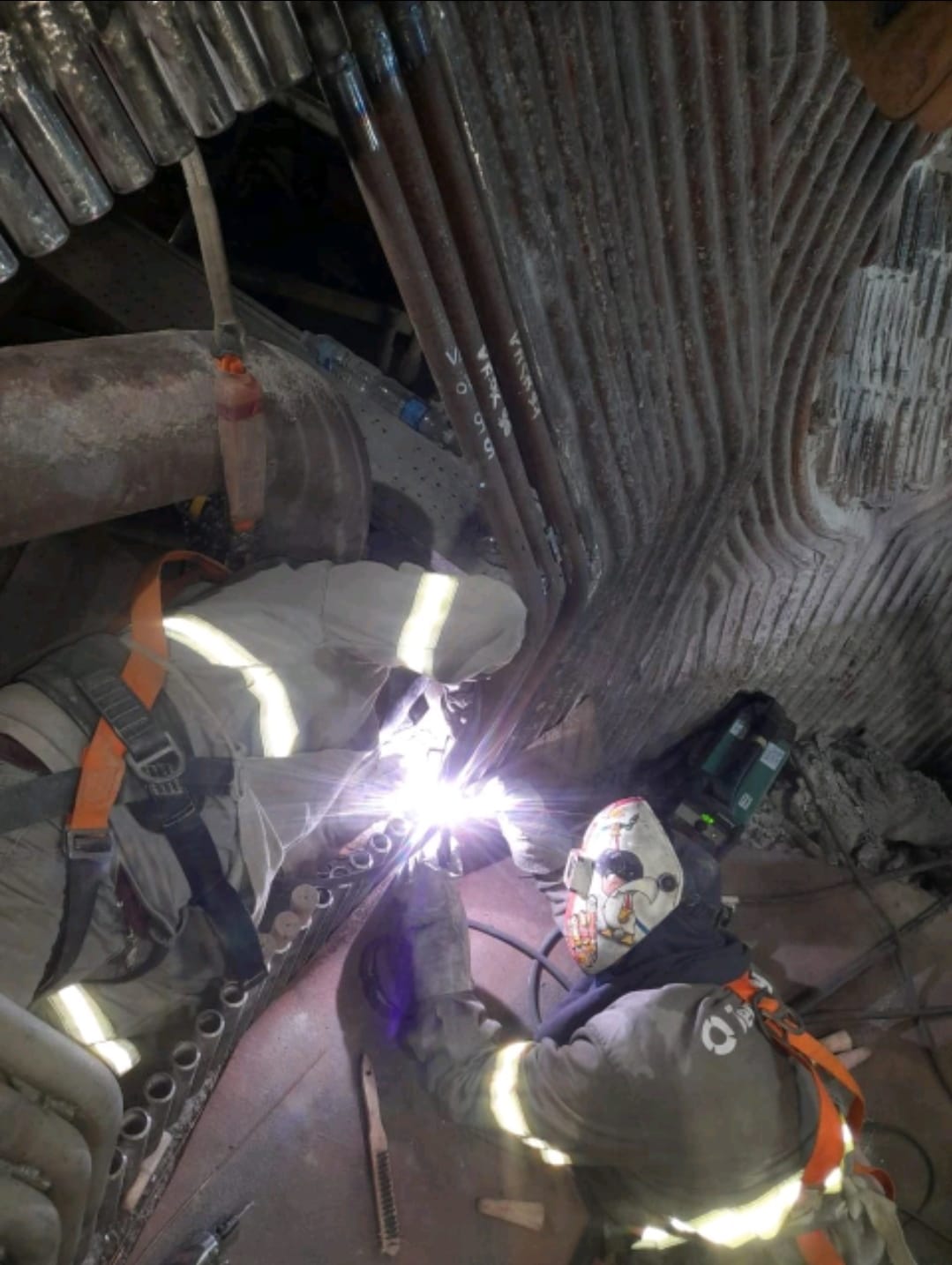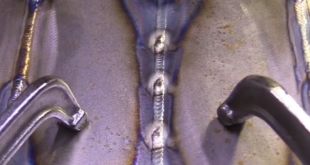Boiler Tube Welding
Introduction
Boiler tube welding is a critical process in various industries, particularly in power generation, petrochemicals, and manufacturing. Ensuring the integrity of boiler tubes is paramount to maintaining the efficiency, safety, and longevity of boilers. In this comprehensive guide, we’ll delve into the intricacies of boiler tube welding, covering everything from preparation to common challenges and best practices. Understanding the nuances of boiler tube welding will help you achieve high-quality welds and ensure the reliable operation of boiler systems.
Understanding Boiler Tubes
Types of Boiler Tubes
Boiler tubes come in different types, each designed for specific applications within boiler systems. The two primary categories are water-tube boilers and fire-tube boilers:
- Water-Tube Boilers: In these boilers, water circulates inside the tubes, which are heated externally by combustion gases. This design allows for higher pressure and temperature applications, making them suitable for large-scale power generation.
- Fire-Tube Boilers: Here, hot gases flow through the tubes, which are surrounded by water. Fire-tube boilers are typically used in smaller industrial applications due to their simpler design and lower pressure capabilities.
Common Materials Used
The materials used for boiler tubes must withstand high temperatures, pressures, and corrosive environments. Common materials include:
- Carbon Steel: Widely used due to its strength and affordability, though it requires proper protection against corrosion.
- Stainless Steel: Offers excellent corrosion resistance and strength at high temperatures, making it ideal for more demanding applications.
- Alloy Steel: Contains additional alloying elements to enhance mechanical properties and resistance to heat and corrosion.

Preparation for Boiler Tube Welding
Safety Measures and Precautions
Safety is paramount in boiler tube welding due to the high temperatures and potentially hazardous materials involved. Welders must:
- Wear Protective Gear: Including helmets, gloves, and flame-resistant clothing to protect against burns and sparks.
- Ensure Proper Ventilation: To avoid inhaling harmful fumes and gases produced during welding.
- Understand Material Hazards: Be aware of the specific risks associated with the materials being welded, such as toxic fumes from certain metals.
Necessary Tools and Equipment
Welding boiler tubes requires specialized tools and equipment to achieve high-quality welds:
- Welding Machines: TIG, MIG, or stick welding machines depending on the specific technique being used.
- Welding Rods or Wires: Chosen based on the material and type of weld required.
- Cutting Tools: For preparing the tubes before welding.
- Alignment Tools: To ensure proper fit-up and alignment of the tubes before welding.
Welding Techniques for Boiler Tubes
TIG Welding
TIG (Tungsten Inert Gas) welding is highly regarded for its precision and control. It uses a non-consumable tungsten electrode and an inert gas shield to protect the weld area from contamination. This technique is ideal for welding thin-walled boiler tubes and materials requiring high-quality welds, such as stainless steel.
MIG Welding
MIG (Metal Inert Gas) welding involves feeding a continuous wire electrode through a welding gun, shielded by an inert gas. This method is known for its speed and efficiency, making it suitable for thicker materials and large-scale projects. MIG welding is often used in industrial applications where productivity is a key concern.
Stick Welding
Stick welding, or SMAW (Shielded Metal Arc Welding), is a versatile and straightforward technique. It uses a consumable electrode coated with flux to lay the weld. Stick welding is commonly used for repairs and in situations where portability and simplicity are needed. It’s particularly useful in fieldwork and for welding thicker sections.
Common Challenges in Boiler Tube Welding
Cracking and Distortion
Cracking and distortion are common issues in boiler tube welding. These problems can arise due to:
- Improper Preheating: Failing to preheat the material can lead to rapid cooling and cracking.
- Incorrect Welding Techniques: Using the wrong technique can cause uneven heat distribution and distortion.
- Rapid Cooling: Cooling the weld too quickly can result in residual stresses and cracking.
Managing heat input and employing proper welding sequences can help mitigate these issues.
Corrosion and Erosion
Boiler tubes are often exposed to corrosive environments and high-velocity fluids, leading to corrosion and erosion:
- Corrosion: Can be minimized by selecting appropriate materials and applying protective coatings.
- Erosion: Can be reduced by controlling the flow rate of fluids and using erosion-resistant materials.
Regular maintenance and inspections are crucial for early detection and prevention of these problems.
Best Practices for High-Quality Welds
Pre-Weld Cleaning
Thorough cleaning of the weld area is essential to remove contaminants that can affect weld quality:
- Removing Rust, Oil, and Grease: Ensures a clean surface for welding.
- Debris Removal: Using wire brushes or chemical cleaners to achieve a contaminant-free surface.
Proper Fit-Up and Alignment
Ensuring the proper fit-up and alignment of boiler tubes is critical for achieving strong and durable welds:
- Alignment Tools: Using clamps and fixtures to hold the tubes in place.
- Precision Fit-Up: Ensuring the tubes are properly aligned to avoid stress concentrations and potential failure points.
Post-Weld Heat Treatment
Post-weld heat treatment (PWHT) is often necessary to relieve residual stresses and improve the mechanical properties of the weld. PWHT involves:
- Controlled Heating: Heating the welded components to a specific temperature.
- Gradual Cooling: Cooling them at a controlled rate to reduce internal stresses and enhance durability.
Inspection and Testing Methods
Non-Destructive Testing (NDT)
Non-destructive testing methods are essential for evaluating the integrity of boiler tube welds without causing damage:
- Ultrasonic Testing: Uses high-frequency sound waves to detect internal defects.
- Magnetic Particle Testing: Detects surface and near-surface discontinuities using magnetic fields.
- Dye Penetrant Testing: Involves applying a dye to the weld surface to reveal surface defects.
Hydrostatic Testing
Hydrostatic testing involves filling the boiler tubes with water and applying pressure to check for leaks and structural integrity. This method is crucial for ensuring the welds can withstand operational pressures and prevent catastrophic failures.
Radiographic Testing
Radiographic testing uses X-rays or gamma rays to inspect the internal structure of welds. This method provides a detailed view of the weld quality and can detect internal defects such as porosity and incomplete fusion.
Repairing Boiler Tube Welds
Identifying Defects
Identifying defects in boiler tube welds is the first step in the repair process:
- Visual Inspection: Checking for visible cracks, porosity, and incomplete fusion.
- NDT Methods: Using ultrasonic or radiographic testing to locate internal defects.
Repair Techniques
Repair techniques for boiler tube welds depend on the type and extent of the defects:
- Grinding Out Defects: Removing the defective area and re-welding.
- Applying Patches: Using patches to cover and reinforce defective areas.
- Specialized Repair Materials: Employing materials designed for specific repair applications.
Proper post-repair inspection is necessary to ensure the integrity of the weld.
FAQs
What is the most common welding technique for boiler tubes?
The most common welding technique for boiler tubes is TIG welding, known for its precision and control, especially in thin-walled and high-quality welds.
How can I prevent cracking in boiler tube welds?
Preventing cracking in boiler tube welds involves proper preheating, managing heat input, and using the correct welding techniques to control the cooling rate.
What materials are typically used for boiler tubes?
Common materials for boiler tubes include carbon steel, stainless steel, and alloy steel, chosen for their ability to withstand high temperatures and pressures.
Why is post-weld heat treatment necessary?
Post-weld heat treatment is necessary to relieve residual stresses, improve the mechanical properties of the weld, and enhance the overall durability of the welded components.
How often should boiler tube welds be inspected?
Boiler tube welds should be inspected regularly, with the frequency depending on operational conditions and industry standards. Regular inspections help detect and address issues before they lead to significant problems.
Conclusion
Boiler tube welding is a complex but essential process in various industries. By understanding the different welding techniques, common challenges, and best practices, welders can achieve high-quality, durable welds. Skilled welders play a crucial role in maintaining the efficiency and safety of boilers, highlighting the importance of ongoing training and adherence to industry standards.
 Welding of Welders All about Welding and Welders
Welding of Welders All about Welding and Welders



